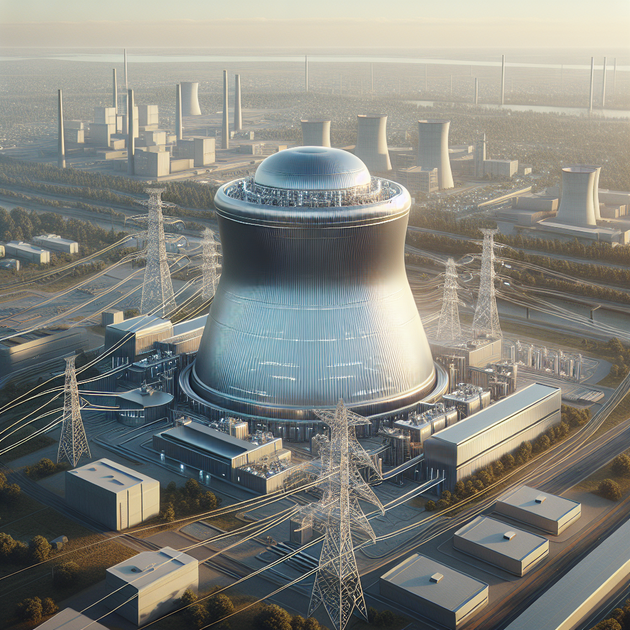Did you know that we might soon get our electricity from a real-life nuclear fusion plant—right here in the U.S.? The Chesterfield Planning Commission just gave the green light to what could become the world’s first nuclear fusion plant connected directly to a commercial power grid. If you’ve ever wondered when “the future” would finally arrive, this is one of those moments.
## What Is a Nuclear Fusion Plant (and Why Do We Care)?
Let’s break down what makes this such big news. A nuclear fusion plant isn’t your typical power station. Instead of splitting atoms (like old-school nuclear fission plants), it smashes them together—just like the sun does—to create massive amounts of clean energy. That means no carbon emissions and way less radioactive waste.
Here’s why Chesterfield’s decision stands out:
– **First of its kind:** This will be the world’s very first fusion plant hooked up to an actual commercial power grid.
– **Cleaner energy:** Fusion doesn’t rely on fossil fuels or create greenhouse gases.
– **Less waste:** Compared to traditional nuclear plants, there’s far less long-lived radioactive material.
– **Reliable and constant:** Unlike solar or wind, which depend on weather or sunlight, fusion can run day and night.
## How Did Chesterfield Become Ground Zero for Fusion Energy?
Chesterfield isn’t usually in headlines about futuristic tech. But their planning commission recently reviewed and approved plans for this pioneering facility ([original Reddit post here](https://www.reddit.com/r/Futurology/comments/1mwjfez/chesterfield_planning_commission_greenlights/)).
The approval didn’t happen overnight. Local officials spent months listening to experts and weighing concerns about safety and cost. In the end, most agreed that hosting a nuclear fusion plant is an opportunity they couldn’t pass up—a chance for their town to help lead the way toward sustainable power solutions.
One city council member reportedly said, “We want our kids to grow up breathing cleaner air—and maybe even work at one of these plants someday.” It goes to show that sometimes big changes start with small-town decisions.
## What Will This Mean for Our Power Grid?
Connecting any kind of new technology to an existing commercial power grid is tricky business—but it’s never been done with a fusion reactor before. If everything goes as planned in Chesterfield:
– The plant could supply thousands (or eventually millions) of homes with steady electricity.
– Fusion-generated energy would reduce reliance on coal and gas.
– It could serve as a blueprint for similar projects across the globe.
But let’s be honest—it won’t happen overnight. Building and testing will take years. Still, having official approval is a huge step forward.
### What Makes Nuclear Fusion Different From Other Clean Energy Sources?
There are plenty of ways we’re already trying to make cleaner electricity—solar panels on rooftops, wind turbines in open fields—but fusion stands out because:
– **It mimics how stars work:** Literally creating star-like reactions here on Earth!
– **No greenhouse gases:** So it won’t add to climate change.
– **Minimal fuel needed:** Just small amounts of elements like hydrogen.
– **Huge potential output:** Even a single reactor could provide tons of steady power.
Here’s a quick comparison:
**Fusion vs Other Clean Energy**
| Source | Reliability | Emissions | Waste |
|—————–|————-|———–|————–|
| Solar | Variable | None | None |
| Wind | Variable | None | None |
| Fission (Old) | High | Low | Long-lived |
| *Fusion* | *High* | *None* | *Very little*|
## An Anecdote From the Early Days
Back when I was in college (not so long ago!), I remember my physics professor saying that “fusion is always 30 years away.” It was sort of an inside joke among scientists—no matter when you asked, that finish line never seemed any closer.
Fast-forward to today: with places like Chesterfield actually moving ahead with real-world projects, maybe we’re finally closing that gap. It feels like we’re living through history being made—one planning commission vote at a time.
## What Comes Next for Fusion—and Us?
So what happens now? Construction crews will eventually break ground in Chesterfield; engineers will get busy building systems that have only existed in labs until now. There will be challenges along the way (as there always are with new tech), but if they pull it off, this could really change how we all get our electricity.
How do you feel about getting your household power from a next-generation nuclear fusion plant? Would you trust it more than current options—or does it sound too futuristic? Let me know your thoughts below!

Leave a Reply